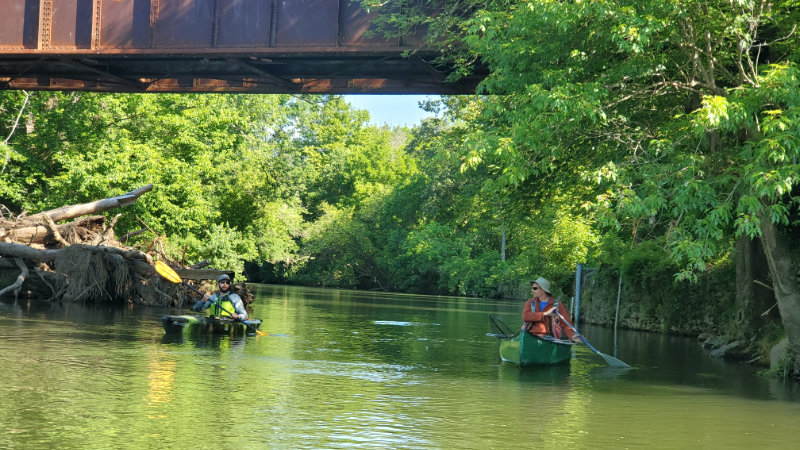Media contact: Diane Huskinson
Avondale, PA — New research conducted by Stroud™ Water Research Center scientists shows how real-time chlorophyll sensors can be used to determine the origins of algae in rivers and streams, and in turn, identify the sources of pollution that algae sometimes signal.
The study, by scientists Marc Peipoch, Ph.D., and Scott Ensign, Ph.D., is the first to test and support the use of existing sensor technology in analyzing the concentration of chlorophyll and its movement over time to then infer algae origins in a freshwater environment.

Existing methods for measuring algae via chlorophyll concentration in waterways are simple and commonly used to indicate possible water pollution. But from where the algae came and when has remained something of a mystery. A rise in chlorophyll concentration could simply be the result of heavy stormflow dragging algae from the riverbed and into the water column. More ominously, it could indicate nutrients from farms, a leaking septic tank, or a sewage treatment plant are flowing into fresh water and stimulating algae to grow faster.
The researchers decided to test the use of EnviroDIY™ Monitoring Stations, a combination sensor and Mayfly Data Logger, to collect water quality data every few minutes during storms, when algae would more rapidly move, mix, and flow down Brandywine Creek, a tributary to the Christina River, in Pennsylvania.
Their theory was that if algae were abundant close to the point of detection (in this case, the sensors), chlorophyll concentration would change more quickly during storms than if the algae came from farther away.
“Whether the chlorophyll concentration initially increases or decreases can indicate whether the algae were growing attached to the streambed or floating in the water above,” says Peipoch.
The data confirmed what the scientists had suspected, and their findings were published in the peer-reviewed journal Limnology and Oceanography Letters.
While not all algae are harmful, too much, no matter the variety, can be deadly. When algae blooms eventually die, they feed bacteria that rob the water of oxygen, leading to fish kills and the death of other aquatic life. Algae outbreaks can also sicken humans, their pets, and marine animals.
Warming temperatures from climate change, excess sunlight from deforestation, and fertilizer from agricultural runoff can fuel algae growth.
Ensign says, “This is an exciting discovery. We’ve demonstrated for the first time a method to identify the sources of algae using the existing sensor technology. We believe that this method should be applicable at a variety of scales — from small shallow streams we see in our backyards to rivers as mighty as the Mississippi.”
***
About Stroud Water Research Center
Stroud Water Research Center seeks to advance knowledge and stewardship of freshwater systems through global research, education, and watershed restoration and to help businesses, landowners, policymakers, and individuals make informed decisions that affect water quality and availability around the world. The Stroud Center is an independent, 501(c)(3) not-for-profit organization recognized as a global leader in the field of freshwater science, environmental education, and watershed restoration, with a secondary location studying tropical ecosystems in Costa Rica.


